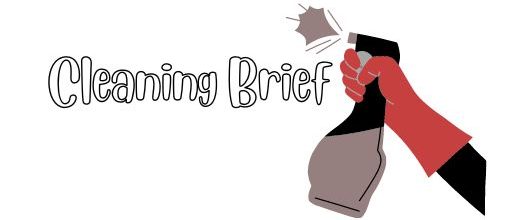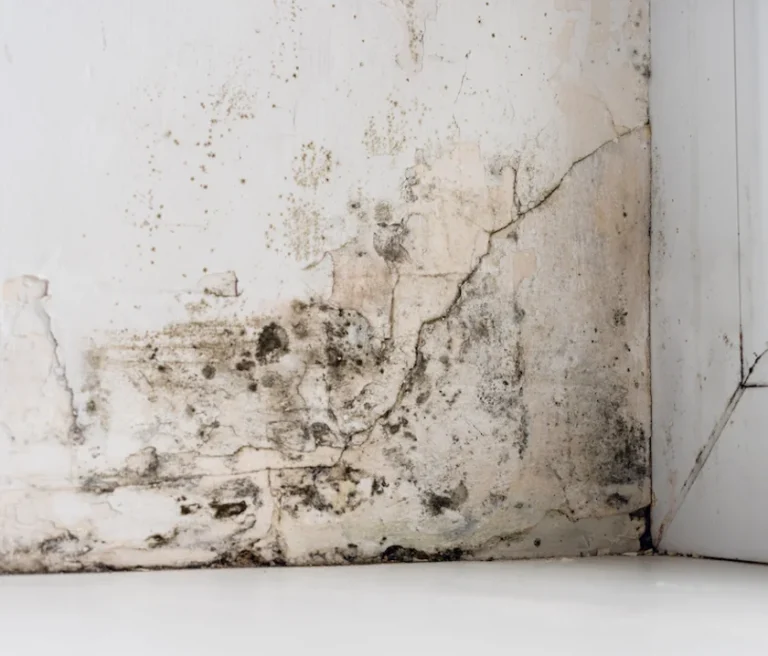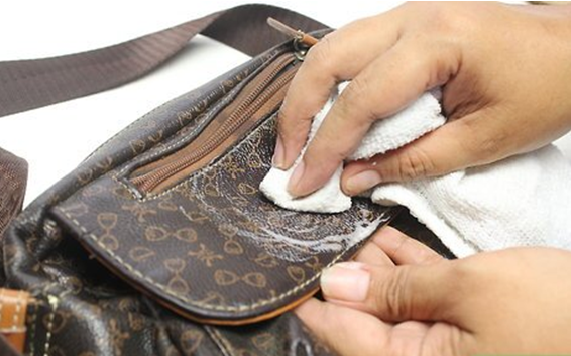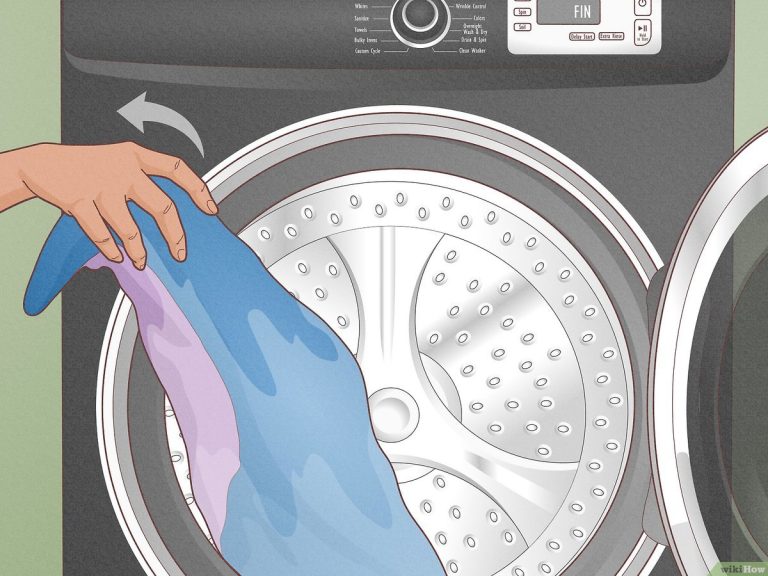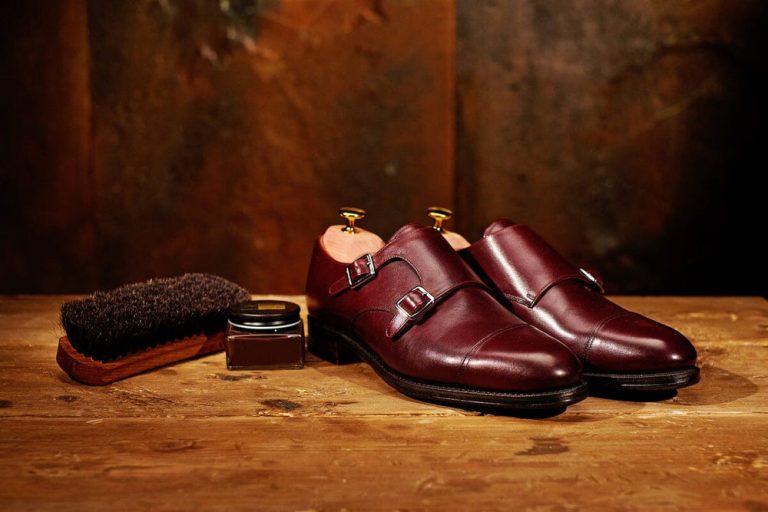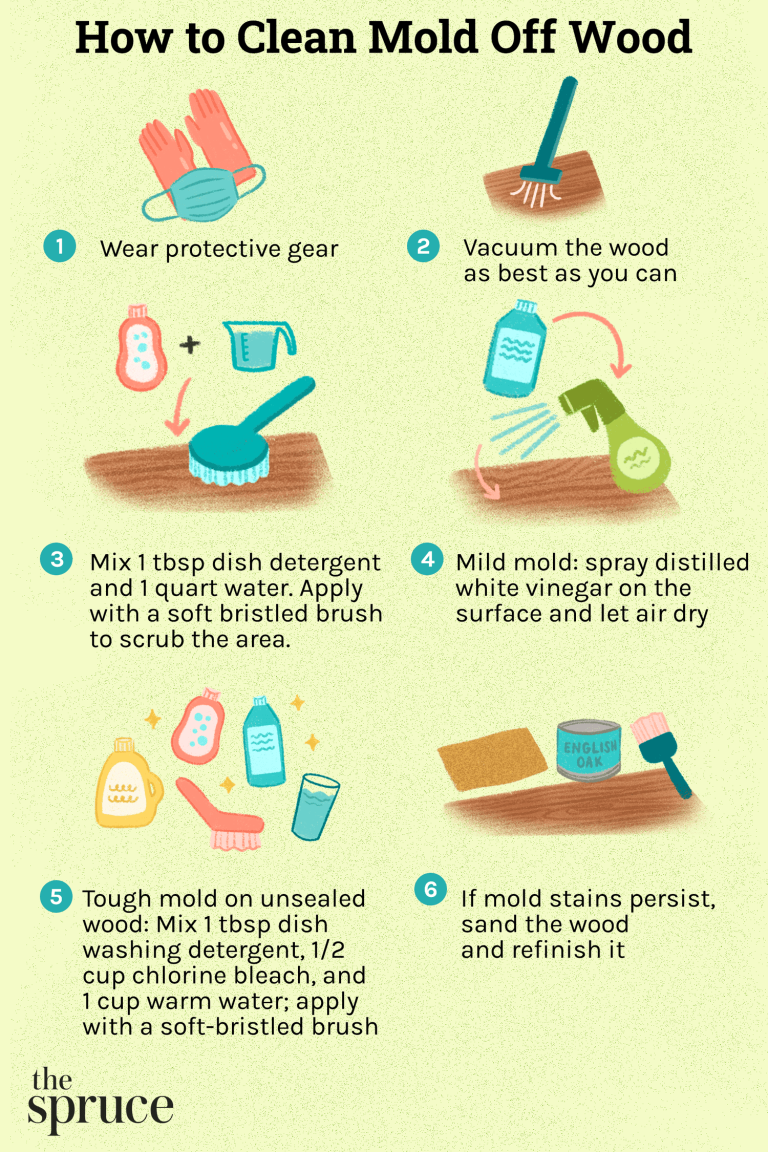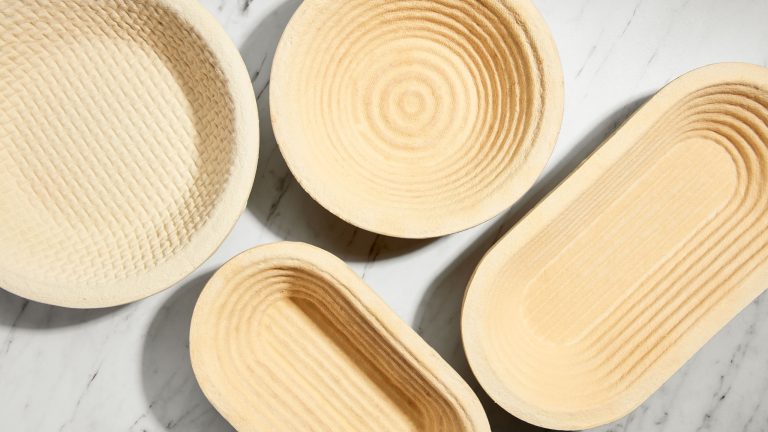How to Clean Mold from Bathroom Walls: Effective Tips and Tricks
To clean mold from bathroom walls, mix equal parts of vinegar and water in a spray bottle. Spray the solution onto the affected areas and scrub with a brush or sponge.
Rinse thoroughly with water. Mold growth on bathroom walls is a common problem in many households. It not only looks unsightly but can also pose health risks if left untreated. Mold thrives in damp and poorly ventilated areas, making bathrooms an ideal breeding ground.
While there are professional cleaning services available, you can easily tackle this issue yourself by following a few simple steps. We will provide you with effective methods to clean mold from your bathroom walls, ensuring a clean and healthy environment for you and your family.
Identifying Mold Growth
Mold growth in the bathroom can be a common problem that poses health risks and can compromise the cleanliness of your space. Identifying mold growth is crucial in order to take appropriate measures to remove it effectively and prevent it from spreading further.
Symptoms Of Mold
Recognizing the signs of mold growth enables you to take immediate action before it becomes a bigger problem. Here are a few common symptoms of mold presence:
- Musty smell: A distinctive, unpleasant odor indicating the presence of mold.
- Discoloration: Black, green, or brown patches on the walls, ceilings, or other surfaces.
- Peeling paint or wallpaper: Mold growth can cause paint or wallpaper to bubble or peel.
- Dark spots: Small, dark spots that appear damp or fuzzy.
- Allergic reactions: Symptoms like sneezing, coughing, or itchy eyes that worsen when spending time in the bathroom.
If you notice any of these symptoms, it’s essential to investigate further to confirm the presence of mold.
Common Mold Locations
Mold tends to thrive in areas with high humidity and moisture, making the bathroom an ideal environment for growth. Here are some common locations where you may find mold in your bathroom:
| Location | Reason for Mold Growth |
|---|---|
| Bathroom walls | Poor ventilation, condensation, and humidity caused by hot showers contribute to mold growth on walls. |
| Tile grout | Moisture absorption and improper cleaning create a breeding ground for mold in the grout. |
| Shower curtains | Constant exposure to moisture without proper drying can lead to mold formation. |
| Bathroom ceiling | Steam from hot showers can rise and accumulate on the ceiling, creating a damp environment favorable for mold growth. |
| Sink or bathtub caulking | Old or deteriorating caulk allows water to seep in, promoting mold growth. |
It’s worth noting that mold can also be found in hidden areas such as behind bathroom fixtures, inside cabinets, or underneath the bathroom floor. Regular inspections and maintenance are essential to prevent mold from spreading unnoticed.
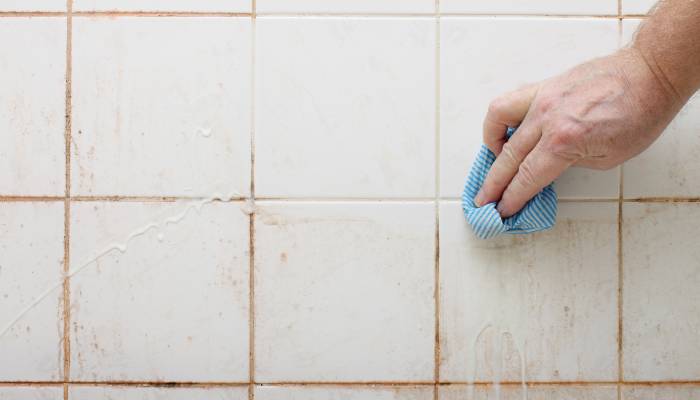
Credit: www.certifiedcleancare.com
Preventing Mold Growth
To maintain a clean and healthy bathroom, it is important to take proactive measures to prevent mold growth. By implementing proper ventilation and regular maintenance, you can keep your bathroom walls mold-free. Here are two essential steps you can take to prevent mold:
Ventilation
Effective ventilation plays a crucial role in preventing mold growth in your bathroom. Without adequate airflow, moisture tends to accumulate, providing the ideal environment for mold to thrive on your walls. To ensure proper ventilation:
- Install an exhaust fan to remove excess moisture from the air. This will help to reduce humidity levels and prevent mold growth. Make sure the fan is appropriately sized for your bathroom.
- Run the exhaust fan during and after showering to remove steam and excess moisture. Leave it on for at least 20 minutes to allow the bathroom to properly dry out.
- Keep bathroom windows open whenever possible to promote air circulation. Natural airflow can assist in reducing moisture levels and discouraging mold growth.
Regular Maintenance
Regular maintenance is essential to preventing mold growth in your bathroom. By implementing a routine cleaning schedule and promptly addressing any issues, you can safeguard against mold on your walls. Here are some maintenance tips:
- Regularly clean and dry the bathroom walls to remove any moisture and prevent mold growth. Use a mildew-resistant cleaning solution or a mixture of water and vinegar for an effective and environmentally friendly option.
- Pay special attention to the grout lines and corners of the bathroom, as these are common areas where mold can easily form. Scrub these areas thoroughly to remove any existing mold or mildew.
- Inspect your bathroom for any leaks or water damage regularly. Address any plumbing issues immediately, as even small leaks can contribute to mold growth over time.
- Consider applying a mold-resistant paint to your bathroom walls. This can act as an extra barrier against mold and provide long-lasting protection.
Tools And Materials
When it comes to cleaning mold from bathroom walls, having the right tools and materials is crucial. It’s important to gather the necessary items before you begin the cleaning process to ensure a safe and effective removal of mold.
Protective Gear
- Gloves
- Protective eyewear
- Face mask or respirator
- Long-sleeved clothing
Cleaning Supplies
- White vinegar
- Baking soda
- Hydrogen peroxide
- Dish soap
- Scrub brush or sponge
- Plastic spray bottle
- Old towels or rags
Cleaning Process
Mold can be a common problem in bathroom walls due to the high humidity and moisture levels present in these areas. It not only looks unsightly but can also pose serious health risks if left untreated. Cleaning mold from bathroom walls is essential to maintain a clean and healthy environment. In this section, we will discuss the step-by-step procedure to effectively clean mold from your bathroom walls.
Preparing The Area
Before starting the cleaning process, it is crucial to ensure proper ventilation in the bathroom. Open any windows or turn on exhaust fans to allow fresh air to circulate and prevent the spread of mold spores.
Gather all the necessary supplies for the cleaning process:
- A pair of rubber gloves
- A respirator or face mask
- Bleach or a commercial mold cleaner
- A spray bottle
- A scrub brush or sponge
- A bucket
- Old towels or rags for drying
Prioritize your safety by wearing rubber gloves and a respirator or face mask to protect yourself from the potentially harmful effects of mold spores and cleaning agents.
Step-by-step Procedure
In a bucket, mix a solution of bleach or a commercial mold cleaner with water in a 1:10 or recommended ratio. Be sure to follow the instructions provided by the manufacturer for the specific cleaner you are using.
Fill a spray bottle with the cleaning solution and evenly spray it onto the affected areas of the bathroom walls. Pay special attention to any visible mold growth or discolored patches.
Using a scrub brush or sponge, gently scrub the walls in circular motions to remove the mold. Apply moderate pressure, but be careful not to damage the surface of the walls.
After scrubbing, rinse the walls thoroughly with clean water to remove any cleaning residue. Inspect the area for any remaining mold and repeat the spraying and scrubbing process if necessary.
Once you have successfully removed the mold, dry the walls using old towels or rags. Proper drying is essential to prevent the growth of mold in the future.
Properly dispose of any used towels, rags, and cleaning materials. Seal them in a plastic bag before placing them in the garbage to prevent mold spores from spreading.
By following these step-by-step instructions, you can effectively clean mold from your bathroom walls and maintain a clean and healthy environment. Remember to periodically check for any signs of mold growth and take immediate action to prevent further issues.
Post-cleaning Maintenance
Maintaining a clean bathroom is crucial after removing mold from the walls. Regularly inspect for any new growth and address any issues promptly. Ensure proper ventilation and consider using a mold-resistant paint to prevent future problems. Regular cleaning and upkeep will help keep your bathroom walls mold-free.
Inspecting For Regrowth
After you have thoroughly cleaned the mold from your bathroom walls, it is important to regularly inspect for any signs of regrowth. Mold can easily come back if there are any lingering moisture issues or hidden areas that were not properly cleaned. Here are some steps to take when inspecting for regrowth:
- Check the entire bathroom, paying close attention to areas near the bathtub, shower, and sink where moisture tends to accumulate.
- Look for any discoloration, musty odor, or small black spots, as these are indications that mold may be present.
- If you spot any signs of mold, take immediate action to prevent it from spreading further.
Preventive Measures
Preventing mold from growing on your bathroom walls is essential to maintain a clean and healthy environment. By following these preventive measures, you can minimize the chances of mold regrowth:
- Reduce moisture in the bathroom by using exhaust fans or opening windows to promote air circulation.
- Fix any leaks or plumbing issues promptly to prevent water from accumulating.
- Clean and dry bathroom surfaces regularly to prevent the buildup of moisture.
- Use mold-resistant paint or wallpaper in your bathroom.
- Keep humidity levels low by using a dehumidifier if necessary.
- Remove any excess water from shower curtains or bathroom rugs after use.
- Regularly inspect and clean bathroom fixtures, such as faucets and showerheads, to prevent mold growth.
By following these post-cleaning maintenance steps and implementing preventive measures, you can significantly reduce the chances of mold returning to your bathroom walls. Regular inspections and proper maintenance are crucial for keeping your bathroom clean and mold-free.
/how-to-clean-a-shower-4580788-hero-0f25c563b0c8474088ffb2a0cb68e2e8.jpg)
Credit: www.thespruce.com
:max_bytes(150000):strip_icc()/SPR-how-to-clean-mold-off-walls-5220421-step-04-D-0fa089a6712746ffb8629fc3823903c1.jpg)
Credit: www.thespruce.com
Frequently Asked Questions Of How To Clean Mold From Bathroom Walls
How Does Mold Grow On Bathroom Walls?
Mold thrives in damp and humid environments, making bathroom walls an ideal breeding ground. Moisture from showers and poor ventilation contribute to mold growth. The spores in the air settle on surfaces, such as walls, and begin to multiply, leading to the appearance of mold patches.
What Are The Health Risks Of Mold In The Bathroom?
Exposure to mold in the bathroom can cause various health problems. Common symptoms include respiratory issues, allergies, skin irritation, and eye irritation. Individuals with compromised immune systems or respiratory conditions may experience more severe reactions. It is essential to address mold promptly to maintain a healthy environment.
How Can I Prevent Mold From Growing On Bathroom Walls?
To prevent mold growth, ensure adequate ventilation in your bathroom. Use exhaust fans or open windows to reduce moisture build-up. Wipe down surfaces regularly, remove excess water from the shower or bathtub, and fix any leaks promptly. Additionally, consider using mold-resistant paint or wallpaper in high-humidity areas.
How Do I Clean Mold From Bathroom Walls?
To clean mold from bathroom walls, mix equal parts of water and bleach in a spray bottle. Spray the affected areas and let it sit for 15 minutes. Scrub the mold with a brush or sponge, rinse the walls with clean water, and dry thoroughly.
Ensure proper ventilation and wear protective gear while cleaning mold.
Conclusion
Incorporating regular cleaning and ventilation can effectively prevent mold growth in your bathroom. By following the simple steps outlined in this guide, you can achieve a clean and mold-free bathroom environment. Remember to consistently maintain your cleaning routine to ensure a healthy and hygienic space for you and your family.
